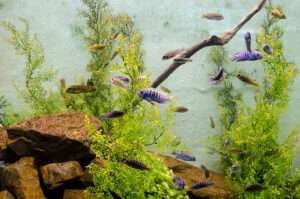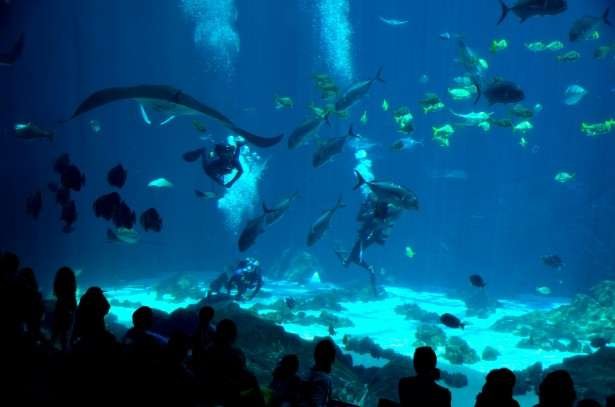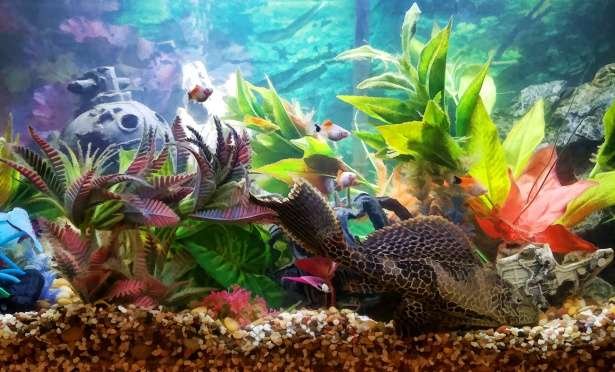What Is Chemical Filtration?

The chemicals in the water are changed during chemical filtration to get rid of contaminants. Certain kinds of chemical filter media are used to make this happen. Chemical filter media work like selective sponges, soaking up only the right kinds of contaminants and leaving the rest behind. Usually, these contaminants are things that are dangerous or ugly, like heavy metals, dissolved organic and inorganic compounds like phosphate or nitrate, smelly compounds, and even tannins that turn the water yellow.
Types Of Chemical Filtration
Activated carbon and GFO (granular ferric oxide) are the two chemical filter media that are most often used in saltwater tanks.
Even though we’re focusing on activated carbon and GFO here, aquarists can use a lot of other chemical filter media as well. Special polymers or resins like Seachem Purigen and Blue Life OrganicFX are two examples. Other types are mixed all-in-one media like Chemi-Pure or Brightwell Aquatics Purit, which contain carbon, GFO, and resins.
Ryan and his team go into the science behind carbon and GFO in movies on BRStv that are very helpful. Take a look!
The 24th week of 52 Weeks of Reefing Filter Media, Carbon, and GFO
5-Minute Saltwater Aquarium Guide: Carbon: Mistakes With Carbon and GFO
ACTIVATED CARBON
Activated carbon is a great and popular filter media because it is cheap and very good at getting rid of things that are bad for your aquarium water, like chlorine and chloramines, tannins, most medications, dissolved organic compounds (DOCs), and contaminants or harmful chemicals.
GFO: GRANULAR FERRIC OXIDE
GFO is only meant to get rid of phosphate and a small amount of silicate from tank water. It’s important to keep the phosphate levels in your aquarium environment in check so that the living things that live there can do well. It’s possible for algae and other pests to grow, and bacteria can become unstable if phosphates are not controlled.
It can be just as dangerous to run with little to no phosphate as it is to run with a lot of it.
For best results, make sure you run your GFO properly. If you find yourself getting impatient or unable to keep an eye on phosphate levels at the granular level, you might want to stop using any GFO and do more water changes instead.
We will always be able to meet 99% of our chemical filter needs with activated carbon and GFO. When you add in biological and mechanical filtration that works well, you have the perfect filtration system for a happy and healthy tank.
Why is it important to use chemical filter media?
Chemical filtration can help your tank. chemical filter may not need to be on all the time for some tanks, but it will help others if it is. If you need a chemical filter or not, it depends on the tank and the quality of the water.
For example, carbon can help if your water supply has a lot of chlorine or chloramines in it. Phosphate and nitrate may also be in the source water sometimes. To keep phosphate levels in check, tanks with a lot of living things may need to use GFO all the time. As organic compounds build up in the tank, the water may turn a different color. Carbon can be used to clean the water. Also, if your fish gets sick and needs medicine, carbon can help get rid of it.
Do I really need chemical filtration?
“If something goes wrong, it’s always a good idea to have a jug of activated carbon and the right kind of media bag on hand. Activated carbon can help clean up your tank if it gets dirty or starts to smell bad. A lot of people who fish find it useful. A lot of people also use GFO, especially reef tank users who need to carefully watch and control phosphate levels.
If this is your first time, you might not need to use chemical filter. A little carbon will do. Chemical filter media can hurt you more than help if you don’t use it right. The tools and methods used for filtering today are very strong. Chemical filtration isn’t always needed if you have a good filtration system and take good care of your fish by feeding and caring for them properly. Most likely, you will only need chemical filtration if something goes wrong and the tank owner doesn’t notice.
There are times when chemical filtration is helpful for almost all tanks, but not all the time. For example, phosphates can easily build up if you feed your fish too much or use new food. Nitrates can also build up if you don’t change the water often enough. If the protein skimmer stops working, the tank can start to smell, and even air fresheners and scented candles can pollute it through aerosol transmission.
How To Use Chemical Filter Media In An Aquarium
It can be put in a filter material bag.
- Figure out how much you need based on how much water you have, and pour it into a filter media bag.
- Run clear water over the media or use RO water to clean it.
- Put the media bag in a part of the tank or sump with a lot of water flow to get the most water through the media.
- If you need to, switch out the media.
This is to be used in a reactor with flow media.
- Figure out how much media you need for the amount of water you have and put it in the right kind of media generator.
- Put the pump’s return line into a sink or bucket.
- Start the feed pump and run it until the water runs clear. This will clean the media of any fines or dust.
- Put the media reactor in your tank, and connect the return line to your sump or filter in the right way.
- Lower the flow rate through the generator to meet the needs of the material you are using.
- Switch out the media when you need to.
Can I Use Too Much Chemical Filtration?
The amount of phosphate can be controlled, especially with GFO. Carbon is safe to use every day, but you should be very careful with GFO. Getting rid of all the phosphates in your tank can be dangerous, especially if you are new to having a saltwater tank. This can make your tank less stable, make pest problems worse, and even hurt the aquarium’s biological balance.
When decreasing phosphates too quickly, you should be careful. If you find that your phosphate levels are too high, dropping them quickly can be harder on your corals than anything else. The important thing is to use the right amount for your tank size and check your phosphate levels every week. This lets you keep an eye on the decrease and figure out when the media needs to be changed or has hit its limit.
It’s important to remember that chemical filter media have boundaries. At some point, all chemical media will stop working and will need to be changed. It is not a good idea to leave chemical media in your tank for longer than is necessary. Carbon, in particular, stops working very quickly—usually in 7 days or less. GFO, on the other hand, can often last between 2 and 6 weeks, depending on how much phosphate you have. As a general rule, you should change the carbon once a week and the GFO when you see that the phosphate levels are beginning to rise in your weekly tests.


